#David grann
Text
In the 1920s, a series of greed-based, racially charged murders of members of the oil-wealthy Osage Nation occurred in Oklahoma. (The linked article is a gift 🎁 link, so anyone can read the entire article, even if they do not subscribe to The New York Times.)
The article's authors, Jim Gray and David Grann, also point out how legislatures in red states like Oklahoma have created laws that are being used to prevent the teaching of significant racist incidents in American history for fear that it could be implied that students are being taught that they "'should feel discomfort, guilt, anguish or any other form of psychological distress' on account of their race or sex." Consequently, teaching about the Reign of Terror against the Osage Nation is being stifled in some Oklahoma schools.
Here is a video about the murders.
youtube
.Below are some excerpts from the article:
During the early 20th century, members of the Osage Nation in Oklahoma were systematically murdered by white settlers. Yet outside the Osage Nation, the history of this racial injustice — one of the worst in American history — was distorted and then largely erased from memory.
“Killers of the Flower Moon,” a film directed by Martin Scorsese, shines an extraordinary light on these events and provides a long overdue opportunity to restore them in our consciousness. But ironically, at the same time that the film is being released, there is a new attempt to suppress the teaching of this very history in the state where it took place.
In 2021 the Oklahoma Legislature passed a bill prohibiting teachers in public school from instructing several concepts, including that “any individual should feel discomfort, guilt, anguish or any other form of psychological distress” on account of their race or sex. The vagueness of the law has caused teachers to censor themselves, for fear of losing their licenses or their school’s accreditation. In a high school classroom in Dewey, Okla., copies of “Killers of the Flower Moon,” the nonfiction book behind the film, were left unread because the teacher worried about running afoul of the law. Another teacher confessed that she was uncertain if she could refer to the settlers who murdered the Osage as white.
At stake in these fights is not only factual accuracy. It is also how new generations will be taught to record and remember the past — both the good and the bad — so that they can learn to make their own history.
The story of what’s now called the Osage Reign of Terror is essential to understanding America’s past. After vast oil deposits were discovered under their lands, the Osage were suddenly, by the 1920s, among the wealthiest people per capita in the world. In the year 1923 alone, the roughly 2,000 Osage on the tribal roll received a total of more than $30 million, the equivalent today of more than $400 million.
As their wealth increased, though, it unleashed an insidious backlash across the country. The U.S. government passed legislation requiring many Osage to have white guardians to manage their fortunes — a system that was both abhorrently racist and widely corrupt. Then the Osage began to die under mysterious circumstances: There were shootings, poisonings and even a bombing.
[color emphasis added]
I encourage you to read the entire article. It is tragic that red states are so afraid of their racist past that they are making it extremely difficult for children in those states to learn about the racist underbelly of American history, and how that history continues to reverberate in our society.

_______________
Video source for gif (before edits/caption)
Originally posted 10.21.23; last edited 01.20.24
#osage murders#oklahoma#american history#killers of the flower moon#censorship#anti-crt legislation#david grann#jim gray#Youtube#the1920s channel#the new york times#my gifs#gift link
309 notes
·
View notes
Text

And though Mollie’s three sisters had wed white men, she felt a responsibility to have an arranged Osage marriage, the way her parents had. Still, Mollie, whose family practiced a mixture of Osage and Catholic beliefs, couldn’t understand why God would let her find love, only to then take it away from her. So, in 1917, she and Ernest exchanged rings, vowing to love each other till eternity.
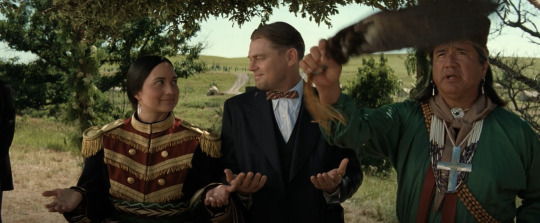
Mollie relied on Ernest for support. A lawyer who knew them both noted that his “devotion to his Indian wife and his children is unusual…and striking.”
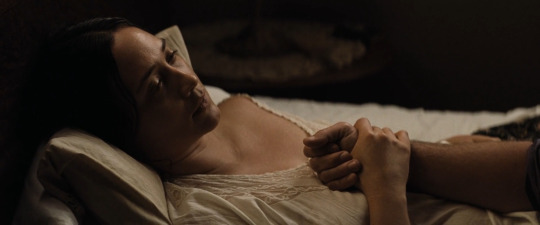
A Justice Department official had noted that her “illness is very suspicious, to say the least.” It was urgent, the official went on, to “get this patient to some reputable hospital for diagnosis and treatment free from the interference of her husband.”
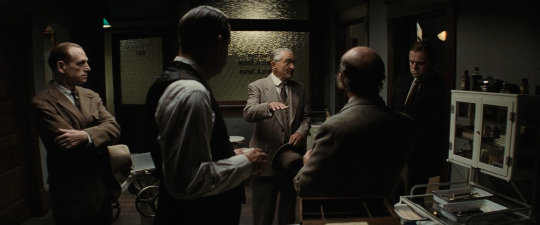
Burkhart never admitted having any knowledge that Mollie was being poisoned. Perhaps this was the one sin that he couldn’t bear to admit. Or perhaps Hale had not trusted him to kill his own wife.

An attorney assisting the prosecution asked whether she’d feel better if agents brought her to see Ernest. “That is all I wanted,” she said.
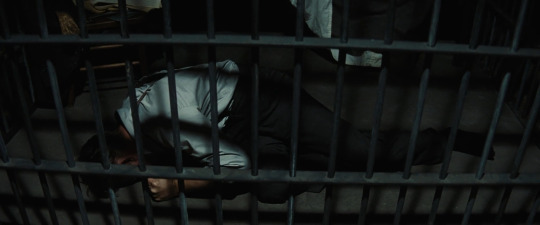
The death of his daughter, the haunting face of his wife each day at the trial, the realization that the evidence against him was piling up—it was too much to withstand. “I’m absolutely helpless,” Burkhart said.

By the time Morrison was convicted of Anna’s murder, Mollie could no longer look at Ernest. She soon divorced him, and whenever her husband’s name was mentioned, she recoiled in horror.

Killers of the Flower Moon, dir. Martin Scorsese // Killers of the Flower Moon by David Grann (2/3)
#killers of the flower moon#martin scorsese#lily gladstone#leonardo dicaprio#kotfmcomp#kotfm#david grann
131 notes
·
View notes
Text
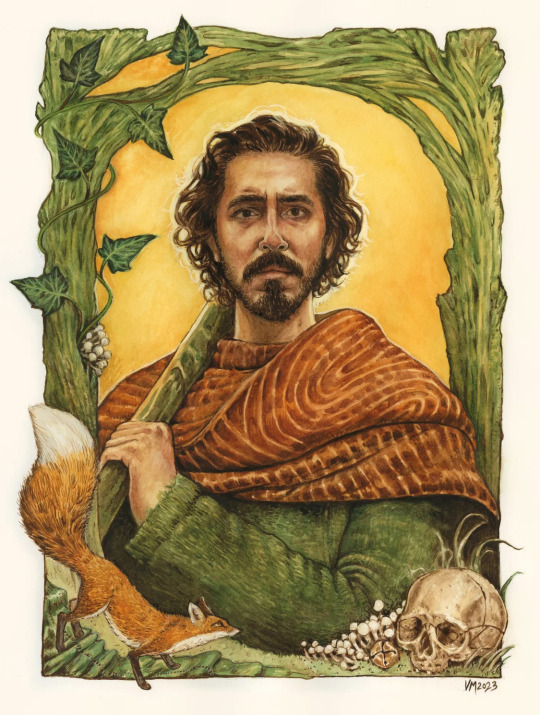

Vanessa McKee has released a portraits of Sir Gawain from The Green Knight and Mollie Burkhart from Killers of the Flower Moon. Each signed 8x10 print on watercolor paper costs $30.
#the green knight#killers of the flower moon#dev patel#lily gladstone#mollie burkhart#sir gawain#vanessa mckee#art#gift#martin scorsese#david lowery#green knight#sir gawain and the green knight#gawain#david grann
61 notes
·
View notes
Text

When you get paid to read your book.. 😄
#personal#me#mine#selfie#girls with tattoos#american traditional#no filter#new england#killers of the flower moon#David Grann#the Osage murders#the birth of the FBI
57 notes
·
View notes
Text

Killers of the Flower Moon by David Grann
#killers of the flower moon#david grann#quote#typography#literature#aesthetic#dark academia#light academia#survival#life and death#dark things#nonfiction#fight#humanity#history
37 notes
·
View notes
Text
5 SECOND REVIEW

15 notes
·
View notes
Text









books I’ve read in 2024 📖 no. 010
The Wager: a Tale of Shipwreck, Mutiny, and Murder by David Grann
“Empires preserve their power with the stories that they tell, but just as critical are the stories they don’t— the dark silences they impose, the pages they tear out.”
31 notes
·
View notes
Text

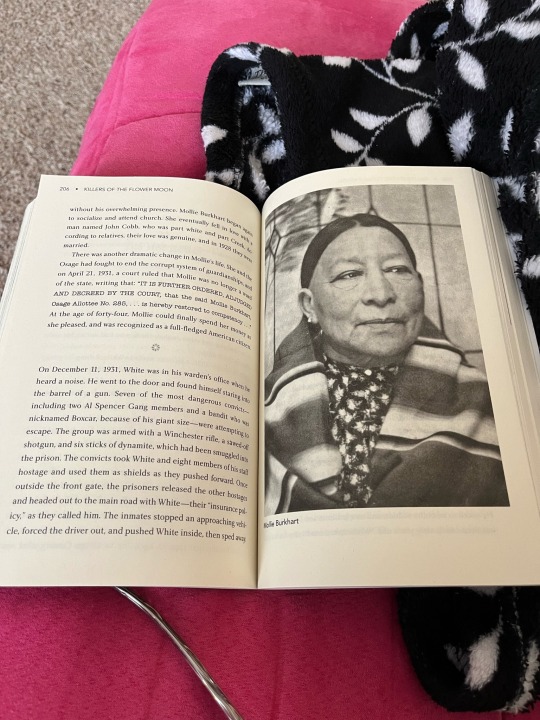
History is a merciless judge. It lays bare our tragic blunders and foolish missteps and exposes our deepest secrets, wielding the power of hindsight like a detective who seems to know the answer to the mystery from the beginning.
#reading#books read in 2024#bookblr#books#book photography#book blog#bibliophile#books reading#books and reading#killers of the flower moon#osage murders#inside the true story of killers of the flower moon’s osage tribe who were worth $320million before plot to destroy them#osage nation#david grann#birth of the fbi#mollie burkhart#william hale#hale that son of a bitch#conspiracy#historical murders#osage#indigenous stories#historical novel#i think everyone needs to read this#indigenous murders#headrights killings#senseless genocide#review#no rating since nonfic#january reads
20 notes
·
View notes
Text
Webb walked me outside onto the front porch. It was dusk, and the fringes of the sky had darkened. The town and the street were empty, and beyond them the prairie, too. 'This land is saturated with blood,' Webb said. For a moment, she fell silent, and we could hear the leaves of the blackjacks rattling restlessly in the wind. Then she repeated what God told Cain after he killed Abel: 'The blood cries out from the ground.'
From Killers of the Flower Moon by David Grann
24 notes
·
View notes
Text
History is a merciless judge. It lays bare our tragic blunders and foolish missteps and exposes our most intimate secrets, wielding the power of hindsight like an arrogant detective who seems to know the end of the mystery from the outset.
- David Grann, Killers of the Flower Moon
#quotes#books#literature#lit#classics#academia#light academia#dark academia#chaotic academia#book#book quotes#quotation#David Grann#Killers of the Flower Moon#Nonfiction#History#Osage#Murder
19 notes
·
View notes
Text
The conflict was the result of the endless jockeying among the European powers to expand their empires. They each vied to conquer or control ever larger swaths of the earth, so that they could exploit and monopolize other nations' valuable natural resources and trade markets. In the process, they subjugated and destroyed innumerable indigenous peoples, justifying their ruthless self-interest--including the reliance on the ever-expanding Atlantic slave trade--by claiming that thy were somehow spreading "civilization" to the benighted realms of the earth.
The Wager by David Grann
#quotes#21st century#nonfiction#18th century#age of sail#the wager#david grann#britain#imperialism#exploitation#atlantic slave trade#indigenous peoples#civilization
8 notes
·
View notes
Text

Βρισκόμαστε μπροστά σε ένα συγκλονιστικό ανάγνωσμα εδώ, ένα από εκείνα που, διαβάζοντάς τα, αποκλείεις τελείως τον κόσμο από γύρω σου —κυριολεκτικά, είσαι μόνο εσύ, το βιβλίο σου και ο κόσμος του— και βυθίζεσαι σ��ωπηλός στην ιστορία που σου αφηγείται. («Βυθίζεσαι»… Συμπτωματικά, η λέξη έχει μια ιδιαίτερη βαρύτητα όταν μιλάμε για το «Γουέιτζερ»). Είχαμε καιρό να το νιώσουμε αυτό. Σχεδόν νιώθεις ψεκάδες να σου νοτίζουν το πρόσωπο, και ακούς τον αέρα στ’ αυτιά σου. Έναν κακό, παλιό αέρα.
Πριν πούμε όμως οτιδήποτε άλλο, να τονίσουμε το εξής. Το ιστορικό αυτό non fiction έχει να κάνει με την εξιστόρηση και την προσεκτική, βήμα-βήμα, κατά το δυνατόν αντικειμενική, διερεύνηση μιας υπόθεσης που συνέβη σχεδόν τρεις αιώνες πίσω: το πλοίο Γουέιτζερ με το πλήρωμά του βυθίστηκε το 1740. Αντιλαμβάνεται κανείς πόσο δύσκολο, αν όχι αδύνατον, είναι να διεξαχθεί σήμερα μια πειστική έρευνα για την εν λόγω υπόθεση, καθώς οι ισχυρισμοί για το τι πραγματικά συνέβη ήταν εκ διαμέτρου αντίθετοι. Το κυριότερο: δεν υπάρχουν ζωντανοί μάρτυρες, δεν υπάρχουν τεκμήρια από τα οποία μπορεί να πιαστεί κανείς. Υπάρχουν όμως καταγεγραμμένες μαρτυρίες, αληθείς ή ψευδείς αδιάφορο. Ο Γκραν, με άλλα λόγια, επιχειρεί κάτι αδιανόητα δύσκολο εκ προοιμίου, κάτι που οι περισσότεροι, αν όχι όλοι οι άλλοι, δεν θα άγγιζαν καν. Και, ω του θαύματος, μας παραδίδει ένα κείμενο —θα το ξαναπούμε— συγκλονιστικό. Διαβάζοντάς τ��, αντιλαμβάνεσαι πως, παρά ταύτα, η ιστορία ΕΙΝΑΙ εκεί, τυλιγμένη σαν μια ξεχασμένη ανάμνηση στο μυαλό σου, και ότι ΜΠΟΡΕΙ εντέλει να σου αποκαλυφθεί. Μέγα επίτευγμα.
Ο Ντέιβιντ Γκραν, βέβαια, δεν είναι οποιοσδήποτε συγγραφέας-ερευνητής. Διαθέτει πελώρια πείρα, και το δημοσιευμένο έργο του στέκεται ήδη αδιάψευστος μάρτυρας των ικανοτήτων του. Δεν χρειάζεται ίσως παρά να αναφέρουμε τους «Δολοφόνους του ανθισμένου φεγγαριού», ανάμεσα στα βιβλία του, που μετέφερε ο Σκορσέζε στον κινηματογράφο. Η ικανότητά του να συνθέτει μια συναρπαστική, γεμάτη σασπένς αφήγηση χρησιμοποιώντας ιστορικά στοιχεία είναι μοναδική. Η δε αναγνωστική απόλαυση που αντλεί κανείς από την εξιστόρηση αυτής της ναυτικής τραγωδίας είναι απαράμιλλη, ειδικά αν αγαπά τη θάλασσα, και τη δύναμη που κρύβουν οι άνθρωποι μέσα τους — δύναμη για το καλό, αλλά και για το κακό…
Τι έχουμε εδώ λοιπόν; Δανειζόμαστε αποσπάσματα από τον Πρόλογο του βιβλίου:
Τον Σεπτέμβριο του 1740, στη διάρκεια μιας ιμπεριαλιστικής διαμάχης με την Ισπανία, το Γουέιτζερ είχε αποπλεύσει από το Πόρτσμουθ με ένα στολίσκο, για μια μυστική αποστολή: να αιχμαλωτίσει ένα ισπανικό γαλιόνι γεμάτο θησαυρούς, το οποίο ήταν γνωστό ως «η μεγάλη λεία των ωκεανών». Έξω από το Ακρωτήριο Χορν, στο νοτιότερο άκρο της Νότιας Αμερικής, ο στολίσκος έπεσε σε τυφώνα, και όλοι θεώρησαν ότι το Γουέιτζερ βυθίστηκε αύτανδρο. Όμως 283 ημέρες από την τελευταία φορά που εθεάθη το πλοίο, οι άνδρες αυτοί εμφανίστηκαν ως εκ θαύματος στη Βραζιλία. Είχαν ναυαγήσει σ’ ένα ερημονήσι στ’ ανοιχτά της Παταγονίας. Οι περισσότεροι από τους αξιωματικούς και τα μέλη του πληρώματος είχαν χάσει στο μεταξύ τη ζωή τους, όμως 81 επιζήσαντες κατάφεραν να φύγουν από το νησί μ’ ένα αυτοσχέδιο σκαρί, φτιαγμένο εν μέρει απ’ τα συντρίμμια του ναυαγισμένου Γουέιτζερ. Στριμωγμένοι στο μικρό σκάφος, τόσο που σχεδόν δεν μπορούσαν να κουνηθούν, πέρασαν μέσα από τρομερούς ανέμους και τεράστια κύματα, αντιμετώπισαν χιονοθύελλες και σεισμούς. Πάνω από 50 άντρες πέθαναν στη διάρκεια αυτού του εξοντωτικού ταξιδιού, κι όταν έφτασαν πια αποδεκατισμένοι στη Βραζιλία, τρεισήμισι μήνες αργότερα, είχαν διανύσει σχεδόν 3.000 ναυτικά μίλια ― ένα από τα μεγαλύτερα ταξίδια ναυαγών που έχουν καταγραφεί ποτέ. […] Έξι μήνες αργότερα ένα άλλο σκάφος ξεβράστηκε στην ακτή, έχοντας περάσει από χιονοθύελλα στ’ ανοιχτά των νοτιοδυτικών παραλίων της Χιλής. Ήταν ακόμα πιο μικρό απ’ το άλλο ― μια ξύλινη πιρόγα μ’ ένα πανί ραμμένο από κουρελιασμένες κουβέρτες. Σ’ αυτή την πιρόγα επέβαιναν άλλοι τρεις επιζήσαντες, οι οποίοι βρίσκονταν σε ακόμα πιο άθλια κατάσταση. Ήταν ημίγυμνοι και αποσκελετωμένοι· σμήνη εντόμων γυρόφερναν το κορμί τους, τσιμπολογώντας ό,τι απέμενε απ’ τη σάρκα τους. Ένας απ’ όλους ήταν σε κατάσταση παραληρηματική, «τα είχε πια σχεδόν χαμένα», όπως το έθεσε ένας σύντροφός του, «δεν θυμόταν τα ονόματά μας… ούτε και το δικό του». Όταν αυτοί οι άντρες ανέρρωσαν κι επέστρεψαν στην Αγγλία, διατύπωσαν εναντίον των συντρόφων τους που είχαν εμφανιστεί στη Βραζιλία μια εξωφρενική κατηγορία: δεν ήταν ήρωες, αλλά στασιαστές.
Τι είχε συμβεί τελικά; Ποιος είχε δίκιο και ποια πλευρά έλεγε την αλήθεια; Ποια φρικτά, αποτρόπαια γεγονότα κρύβονταν πίσω από τον ηρωισμό και τη γενναιότητα των επιζώντων; Κυρίως: μέχρι ποίου σημείου μπορεί να φτάσει κάποιος για να επιβιώσει;
Γράφει πάλι ο Γκραν:
Όλοι επιβάλλουμε εκ των υστέρων μια κάποια συνοχή ―ένα νόημα― στα χαοτικά συμβάντα της ύπαρξής μας. Ανασκαλεύουμε τις ακατέργαστες εικόνες που έχουμε στη μνήμη μας, επιλέγοντας, εξωραΐζοντας, διαγράφοντας. Εμφανιζόμαστε ως ήρωες των ιστοριών μας, κι αυτό μας επιτρέπει να αποδεχθούμε ό,τι πράξαμε ― ή δεν πράξαμε. Όμως εκείνοι οι άντρες πίστευαν πως η ίδια τους η ζωή κρεμόταν απ’ τις ιστορίες που θα έλεγαν. Αν δεν κατάφερναν να παρουσιάσουν ένα πειστικό αφήγημα, ήταν πολύ πιθανό να βρεθούν κρεμασμένοι στο κατάρτι κάποιου πλοίου.
Το μυθιστόρημα είναι συναρπαστικό. Δεν έχανα ευκαιρία να το πιάσω στα χέρια μου και να συνεχίσω την ανάγνωση. Ο συγγραφέας του, ο Ντέιβιντ Γκραν, έχει γράψει κι ένα άλλο βιβλίο τη μεταφορά του οποίου είδαμε φέτος στις κινηματογραφικές αίθουσες (αναφέρομαι στην ταινία «Οι δολοφόνοι του ανθισμένου φεγγαριού»). Αυτήν όμως την ώρα θέλω να στείλω τον αναγνώστη στο κοντινότερο βιβλιοπωλείο για να προσφέρει στον εαυτό του μια ύψιστη απόλαυση: το διάβασμα μιας ναυτικής περιπέτειας που μπορεί μεν να μην ενέχει ούτε μια στιγμή κάποια ερωτική ιστορία, που μπορεί το γυναικείο φύλο να απουσιάζει εντελώς, που μπορεί να μην περιγράφει τη σύγχρονη εποχή μας, που δεν αναφέρεται στην Τεχνητή Νοημοσύνη, αλλά που είναι γραμμένο με τέτοιον τρόπο που δεν μπορώ παρά να αποδώσω τα εύσημα στον συγγραφέα του και τα συγχαρητήριά μου στην Δέσποινα Κανελλοπούλου που το μετέφρασε.
Ας διαβάσουμε όμως ένα μικρό απόσπασμα από το βιβλίο (σελ. 202-204):
Ένα βράδυ, την ώρα που ο Μπάυρον φύλαγε σκοπιά, άκουσε κάτι να σαλεύει. Δεν του είχε περάσει ο φόβος πως υπήρχε ένα πελώριο θηρίο που περιφερόταν στο νησί όταν έπεφτε το σκοτάδι. Σε μια περίπτωση, όπως είχε σημειώσει στο ημερολόγιό του, ένας ναύτης είχε ισχυριστεί ότι, εκεί που κοιμόταν, τον είχε «ξυπνήσει κάποιο ζώο που ξεφύσησε πάνω στο πρόσωπό του, και μόλις άνοιξε τα μάτια του αντίκρισε έκπληκτος στην ανταύγεια της φωτιάς ένα μεγάλο θηρίο να στέκεται από πάνω του». Ο ναυτικός τούς είχε αφηγηθεί, με «τον τρόμο ζωγραφισμένο στην όψη του», πώς ξέφυγε την τελευταία στιγμή. Αργότερα ο ευσυγκίνητος Μπάυρον νόμισε πως είχε διακρίνει ένα παράξενο αποτύπωμα στο αμμώδες έδαφος: ήταν «βαθύ και ευκρινές, μια μεγάλη στρογγυλή πατούσα με μεγάλα νύχια».
Προσπάθησε να διακρίνει κάποια μορφή μέσα στο σκοτάδι. Ήταν αδύνατο να δει το οτιδήποτε, άκουγε όμως τον ήχο, επίμονο και άγριο. Ερχόταν από το εσωτερικό του αντίσκηνου. Έβγαλε το όπλο του και μπήκε μέσα. Κι εκεί, μπροστά του, είδε να γυαλίζουν τα μάτια ενός απ’ τους συντρόφους του. Ο άντρας είχε μπει έρποντας από κάτω απ’ το αντίσκηνο και τώρα άρπαζε τρόφιμα. Ο Μπάυρον τον σημάδεψε κατάστηθα με το πιστόλι, κι ύστερα έδεσε με σχοινί τα χέρια του κλέφτη σ’ ένα στύλο και πήγε να ειδοποιήσει τον πλοίαρχο.
Ο Τσηπ έθεσε τον άντρα υπό κράτηση, ελπίζοντας πως έτσι θα αποτρέπονταν περαιτέρω κρούσματα. Λίγο αργότερα, ωστόσο, ο ένοπλος αρχιφροντιστής, ο Τόμας Χάρβεϋ, την ώρα που είχε βγει να περπατήσει, εντόπισε μια μορφή να σέρνεται στους θάμνους δίπλα στο αντίσκηνο με τις προμήθειες. «Ποιος είναι εκεί;» Ήταν ένας πεζοναύτης ονόματι Ρόουλαντ Κράσσετ. Ο Χάρβεϋ τον συνέλαβε και του έκανε σωματικό έλεγχο, κατά τον οποίο, σύμφωνα με το ημερολόγιο του Μπάλκλεϋ, διαπίστωσε ότι ο άντρας είχε πάνω του «τεσσάρων ημερών αλεύρι για πάνω από ενενήντα ψυχές, κι ένα κομμάτι μοσχάρι μέσα από το πανωφόρι του», ενώ είχε κρύψει άλλες τρεις φέτες κρέας στους θάμνους.
Εκείνη την ώρα φυλούσε σκοπιά στο αντίσκηνο ένας άλλος πεζοναύτης, ο Τόμας Σμιθ, που ήταν φίλος του Κράσσετ, και ο οποίος συνελήφθη ως συνεργός.
Τα νέα των συλλήψεων μαθεύτηκαν στον οικισμό, εμπνέοντας στους καταβεβλημένους κατοίκους του μια φρενίτιδα επιφυλακής. Ο Τσηπ είπε στον Μπάλκλεϋ και μερικούς άλλους αξιωματικούς: «Ειλικρινά πιστεύω ότι οι κρατούμενοι για την κλοπή στην αποθήκη ―η οποία, υπό τις παρούσες συνθήκες, ισοδυναμεί με καταδίκη όλων των υπολοίπων σε λιμοκτονία― θα πρέπει να τιμωρηθούν με θάνατο». Κανένας δεν διαφώνησε. «Δεν είχε μόνον ο Πλοίαρχος αυτή την άποψη, αλλά τη συμμερίζονταν και όλοι οι άλλοι παρευρισκόμενοι» σημείωσε ο Μπάλκλεϋ.
Εν τέλει, ωστόσο, ο Τσηπ αποφάσισε πως για τους κατηγορούμενους θα «εφαρμοστούν οι κανόνες του Ναυτικού, και η μοίρα τους θα εξαρτηθεί από αυτούς και μόνον». Με βάση αυτούς τους κανονισμούς αποφάσισε ότι θα άγονταν ενώπιον ναυτοδικείου: εφόσον διαπράττονταν εγκλήματα στη Νήσο Γουέιτζερ, θα γίνονταν δίκες.
Ακόμα και εν μέσω εκείνης της απέραντης ερημιάς ―τόσο μακριά από την Αγγλία και το άγρυπνο βλέμμα του Ναυαρχείου―, ο Τσηπ και πολλοί από τους ναυαγούς παρέμεναν αφοσιωμένοι στον ναυτικό κώδικα της Βρετανίας. Έστησαν βιαστικά μια δημόσια δίκη, ορίζοντας μερικούς αξιωματικούς ως δικαστές. Σύμφωνα με τους κανονισμούς του Ναυτικού, κανονικά θα έπρεπε να είναι αμερόληπτοι· στην προκειμένη περίπτωση όμως κανένας δεν έμενε ανεπηρέαστος από τα εγκλήματα των κατηγορουμένων. Οι δικαστές, με τα κουρελιασμένα ρούχα τους, έδωσαν τον όρκο τους και οι κατηγορούμενοι οδηγήθηκαν ενώπιόν τους. Διαβάστηκε δυνατά το κατηγορητήριο, ενώ ο άνεμος τους χτυπούσε αλύπητα. Κλήθηκαν μάρτυρες ― που ορκίστηκαν να πουν «την αλήθεια, όλη την αλήθεια, και μόνο την αλήθεια». Η μόνη υπερασπιστική γραμμή των κατηγορουμένων ήταν, όπως φάνηκε, ότι θα έκαναν οτιδήποτε, όσο βάναυσο ή δόλιο κι αν ήταν, προκειμένου ν’ αποφύγουν τη λιμοκτονία. Καμία από τις δίκες δεν διάρκεσε πολύ: και οι τρεις κατηγορούμενοι κρίθηκαν ένοχοι.
Μετά από την ανάγνωση των Άρθρων του Πολέμου, διαπιστώθηκε ότι «το έγκλημα δεν έθιγε την ανθρώπινη ζωή» και ως εκ τούτου δεν επέσυρε ποινή θανάτου. Αντ’ αυτού, ο κάθε ένοχος καταδικάστηκε σε εξακόσιες βουρδουλιές ― έναν αριθμό τόσο υπερβολικό, που θα αναγκάζονταν να εκτελέσουν την ποινή σε δόσεις των διακοσίων, κατανεμημένων σε διάστημα τριών ημερών, ειδάλλως θα απέβαιναν θανατηφόρες. Ένας ναύτης του Πολεμικού Ναυτικού είχε σχολιάσει κάποτε, λίγο πριν εκτελεστεί η ποινή της μαστίγωσής του: «Είμαι βέβαιος ότι δεν θα αντέξω αυτό το μαρτύριο· καλύτερα να με πυροβολούσαν ή να με κρεμούσαν από το κατάρτι».
Πολλοί απ’ τους ναυαγούς, ωστόσο, θεώρησαν ότι οι εξακόσιες βουρδουλιές δεν ήταν αρκετές. Ζητούσαν την εσχάτη των ποινών. Τότε απευθύνθηκε στον κόσμο ο Μπάλκλεϋ, ο οποίος πρότεινε κάτι που το χαρακτήρισε «ό,τι πλησιέστερο στο θάνατο» ― μια τιμωρία που «θα ενέπνεε σε όλους το φόβο άπαξ και διά παντός». Πρότεινε, αφού μαστίγωναν τους ενόχους, να τους εξορίσουν σε μια βραχονησίδα λίγο παραέξω απ’ την ακτή, η οποία είχε κάποια μύδια, βούκινα και λίγο πόσιμο νερό, και να τους αφήσουν εκεί μέχρι να βρεθεί τρόπος να επιστρέψει το πλήρωμα στην Αγγλία.
Ο πλοίαρχος Τσηπ ενθουσιάστηκε με την ιδέα. Έπειτα από μια τόσο σκληρή τιμωρία, ήταν βέβαιο ότι κανένας άλλος δεν θα τολμούσε ν’ αψηφήσει τις εντολές του και να βάλει τις προσωπικές του ανάγκες πάνω απ’ τις ανάγκες του συνόλου.
ΔΥΟ ΛΟΓΙΑ ΓΙΑ ΤΟΝ ΣΥΓΓΡΑΦΕΑ: Ο David Grann (1967) είναι συγγραφέας και ερευνητής δημοσιογράφος στο περιοδικό The New Yorker. Έχει βραβευτεί, μεταξύ άλλων, με το Edgar Allan Poe Award και το George Polk Award. Το βιβλίο του «Killers of the Flower Moon» («Οι δολοφόνοι του ανθισμένου φεγγαριού», Λαβύρινθος 2019) ήταν φιναλίστ για το National Book Award. Άλλα βιβλία του: «The Lost City of Z», «The White Darkness», «The Devil and Sherlock Holmes».
Daily inspiration. Discover more photos at Just for Books…?
9 notes
·
View notes
Text

But Mathis, who managed Anna’s financial affairs, contacted Mollie, and she led a grim procession toward the creek that included Ernest, Bryan, Mollie’s sister Rita, and Rita’s husband, Bill Smith. Many who knew Anna followed them, along with the morbidly curious.

An Oklahoma reporter observed, “Travel in any direction that you will from Pawhuska and you will notice at night Osage Indian homes outlined with electric lights, which a stranger in the country might conclude to be an ostentatious display of oil wealth. But the lights are burned, as every Osage knows, as protection against the stealthy approach of a grim specter—an unseen hand—that has laid a blight upon the Osage land and converted the broad acres, which other Indian tribes enviously regard as a demi-paradise, into a Golgotha and field of dead men’s skulls….The perennial question in the Osage land is, ‘who will be next?’ ”

There were fewer and fewer Osage who knew the old prayers for the dead. Who would chant every morning at dawn for her?

One day, Hale’s pastures were set on fire, the blaze spreading for miles, the blackened earth strewn with the carcasses of cattle. To Mollie, even the King of the Osage Hills seemed vulnerable, and after pursuing justice for so long, she retreated behind the closed doors and the shuttered windows of her house. She stopped entertaining guests or attending church; it was as if the murders had shattered even her faith in God.

White found himself wandering through a wilderness of mirrors—his work more akin to espionage than to criminal investigation.

An Osage, speaking to a reporter about the guardians, stated, “Your money draws ’em and you’re absolutely helpless. They have all the law and all the machinery on their side. Tell everybody, when you write your story, that they’re scalping our souls out here.”
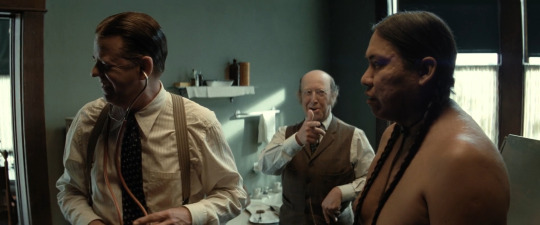
The doctor recalled asking Hale, “Bill, what are you going to do, kill this Indian?” Hale, laughing, said, “Hell, yes.”
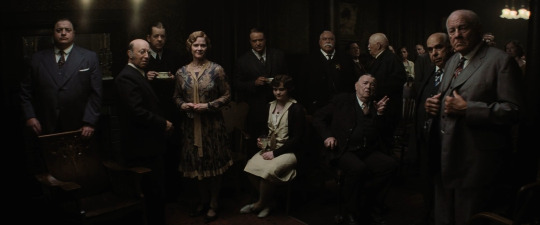
White observed the way Ramsey kept saying “the Indian,” rather than Roan’s name. As if to justify his crime, Ramsey said that even now “white people in Oklahoma thought no more of killing an Indian than they did in 1724.”
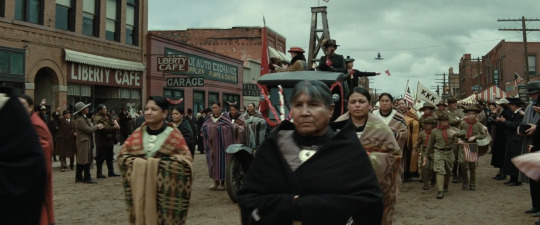
A prominent member of the Osage tribe put the matter more bluntly: “It is a question in my mind whether this jury is considering a murder case or not. The question for them to decide is whether a white man killing an Osage is murder—or merely cruelty to animals.”

Under the headline OLD WILD WEST STILL LIVES IN LAND OF OSAGE MURDERS, a wire service sent out a nationwide bulletin that the story, “however depressing, is nevertheless blown through with a breath of the romantic, devil-may-care frontier west that we thought was gone. And it is an amazing story, too. So amazing that at first you wonder if it can possibly have happened in modern, twentieth-century America.”
Killers of the Flower Moon, dir. Martin Scorsese // Killers of the Flower Moon by David Grann (1/3)
#kotfm#lily gladstone#leonardo dicaprio#martin scorsese#killers of the flower moon#david grann#jesse plemons#robert de niro#kotfmcomp
39 notes
·
View notes
Text


#killers of the flower moon#lily gladstone#mollie burkhart#leo dicaprio#leonardo dicaprio#ernest burkhart#martin scorsese#osage#indigenous#first nations#oklahoma#david grann
15 notes
·
View notes
Text
In 30 years as a movie star, Leonardo DiCaprio has played everyone including a mentally challenged man-child, Romeo, historic figures like Howard Hughes and J. Edgar Hoover and slick, unscrupulous con men like Jordan Belfort. Yet he's never played a character more jarringly amoral as Ernest Burkhart, the salty protagonist in Martin Scorsese's adaptation of David Grann's true crime book "Killers of the Flower Moon." He comes to a small, oil-rich town in Oklahoma, and becomes the treacherous, morally reprehensible henchman of his even more corrupt uncle, William "King" Hale (Robert De Niro), en route to destroying an entire Osage family.
DiCaprio has long had a baby face, which served him well as a teen heartthrob and young movie star, but, at times, less convincingly playing more adult roles. Here, the 49-year-old has never looked worse or more convincing. His face wan and puffy, his teeth subtly altered, his mouth perpetually in a De Niro-esque frown, he plays Ernest as the worst kind of duplicitous: Bizarrely unaware of his own utter moral decrepitude.
#piers marchant#sweet smell of success#ssos#movies#films#arkansas democrat gazette#Killers of the flower moon#martin scorsese#osage#Leonardo DiCaprio#robert deniro#lily gladstone#David Grann#FBI#Jesse plemons
14 notes
·
View notes
Text

Title: The Wager | Author: David Grann | Publisher: Doubleday (2023)
6 notes
·
View notes